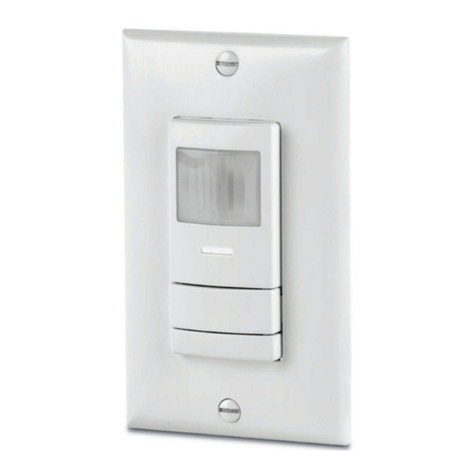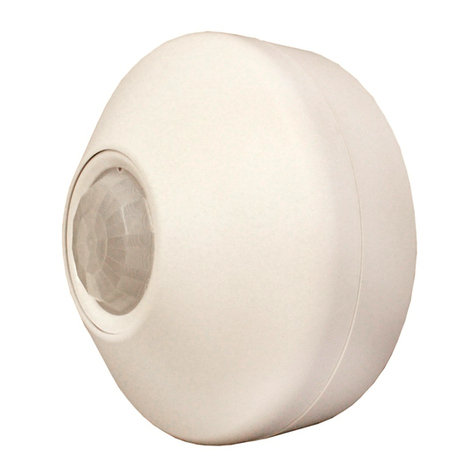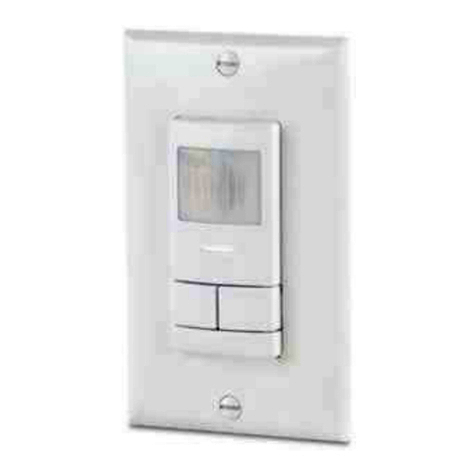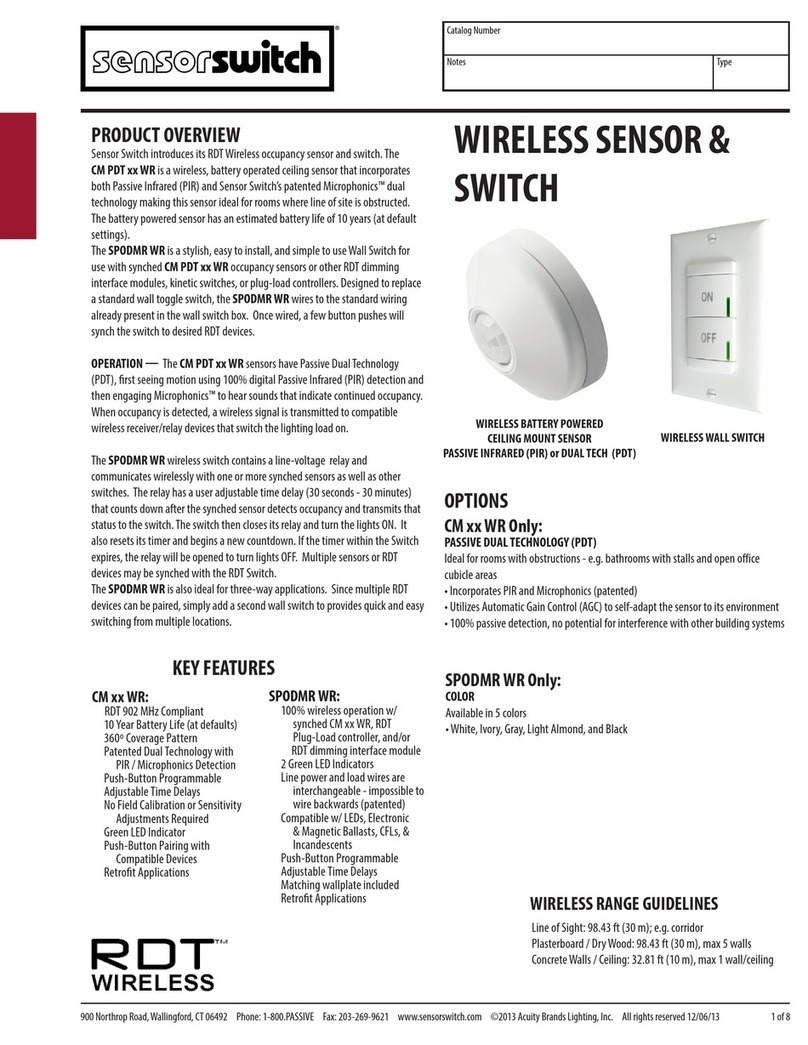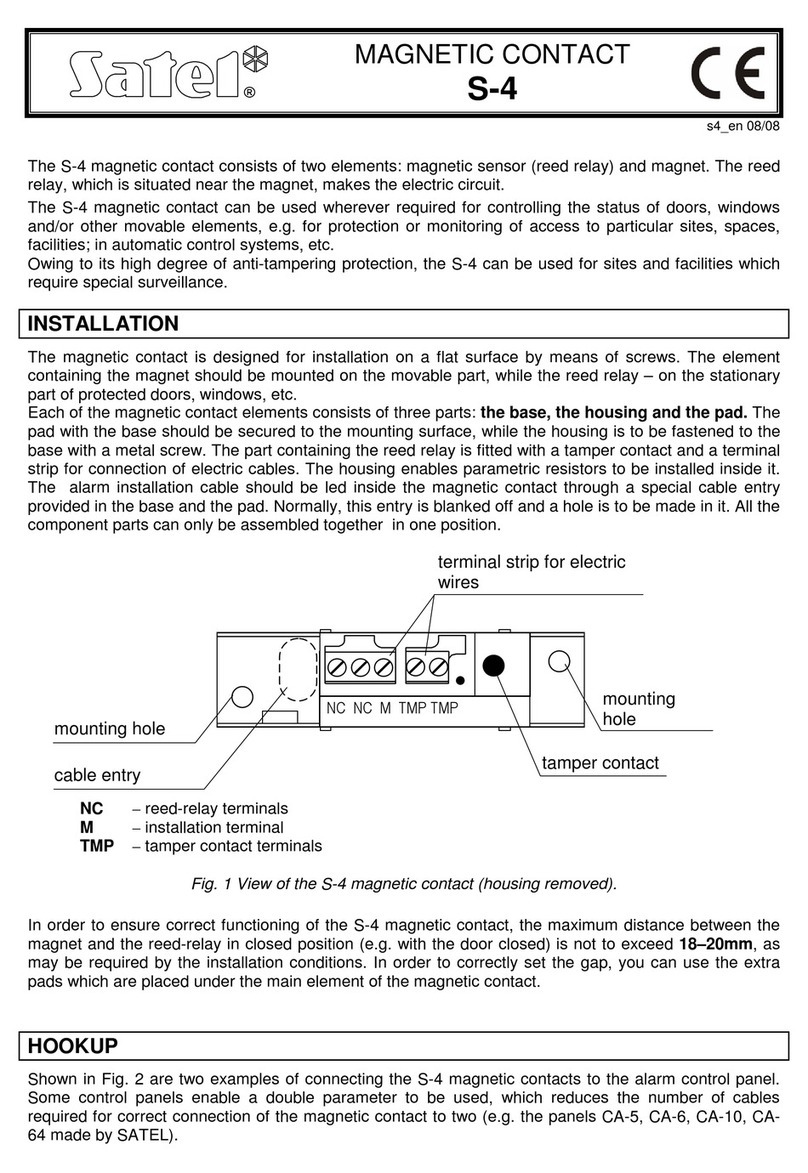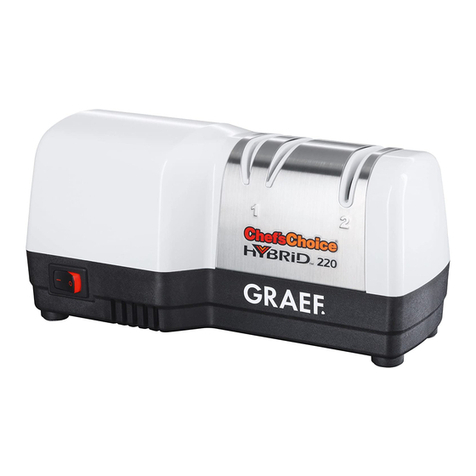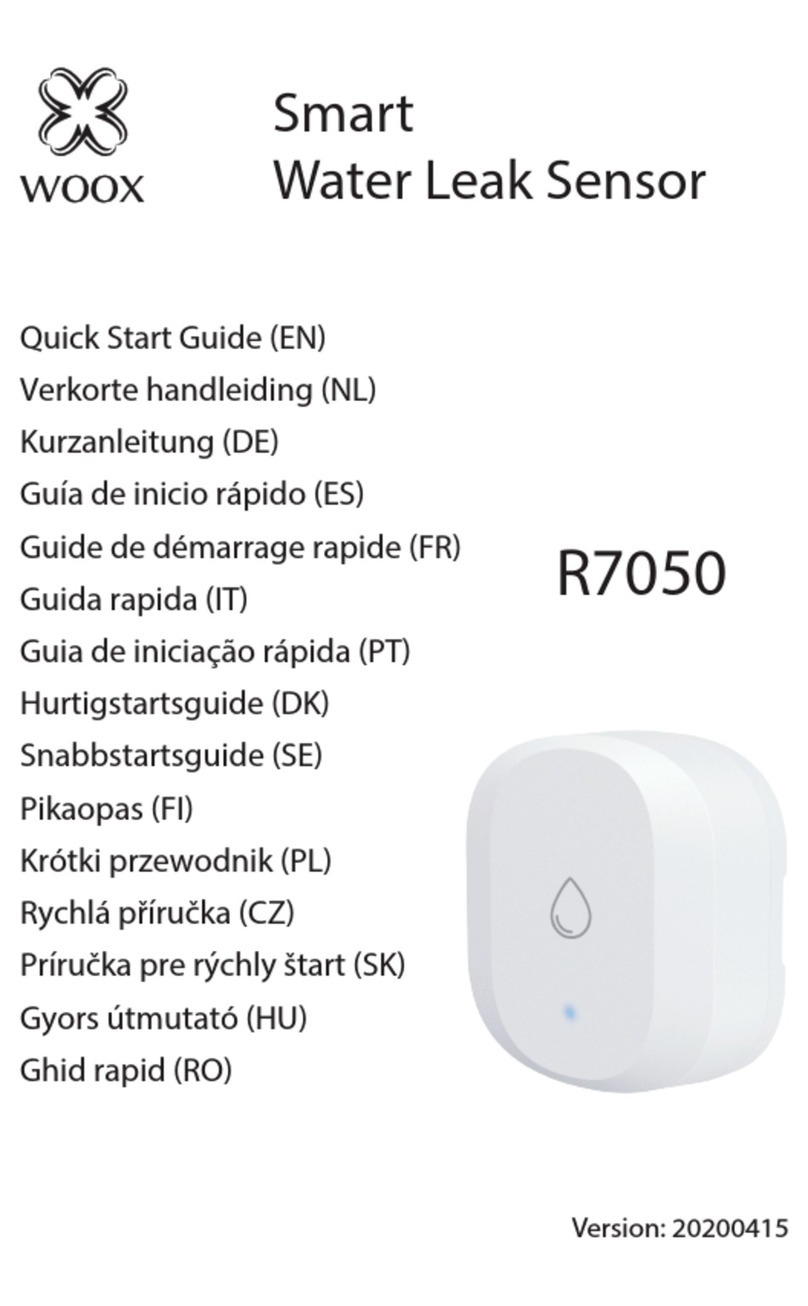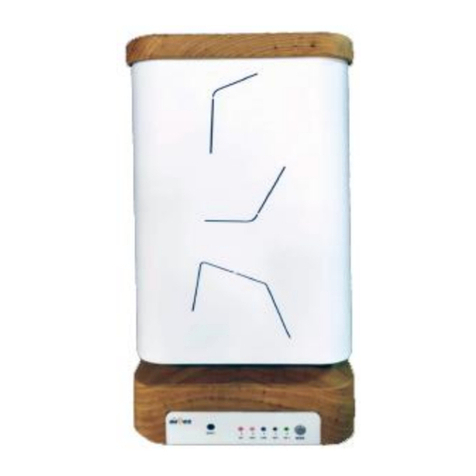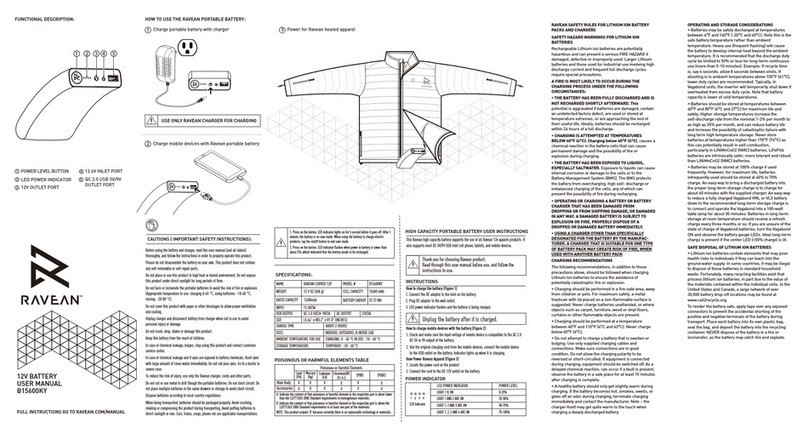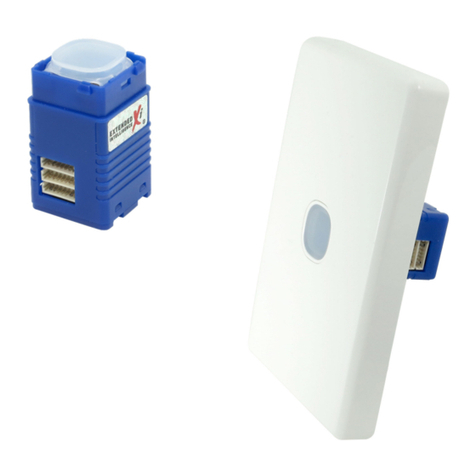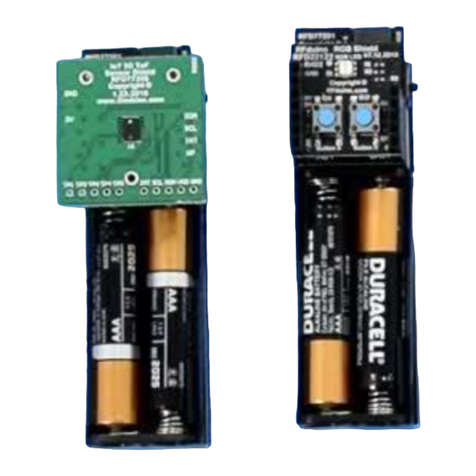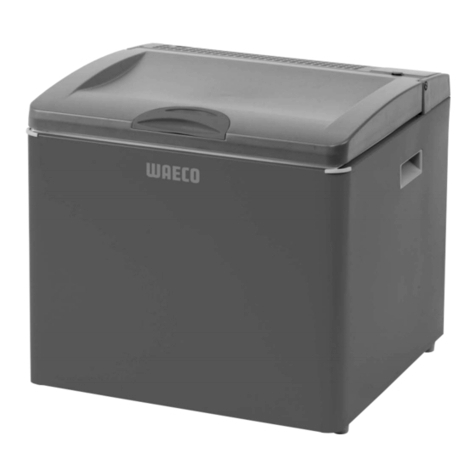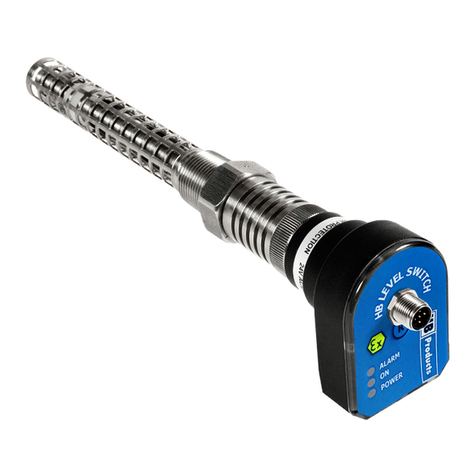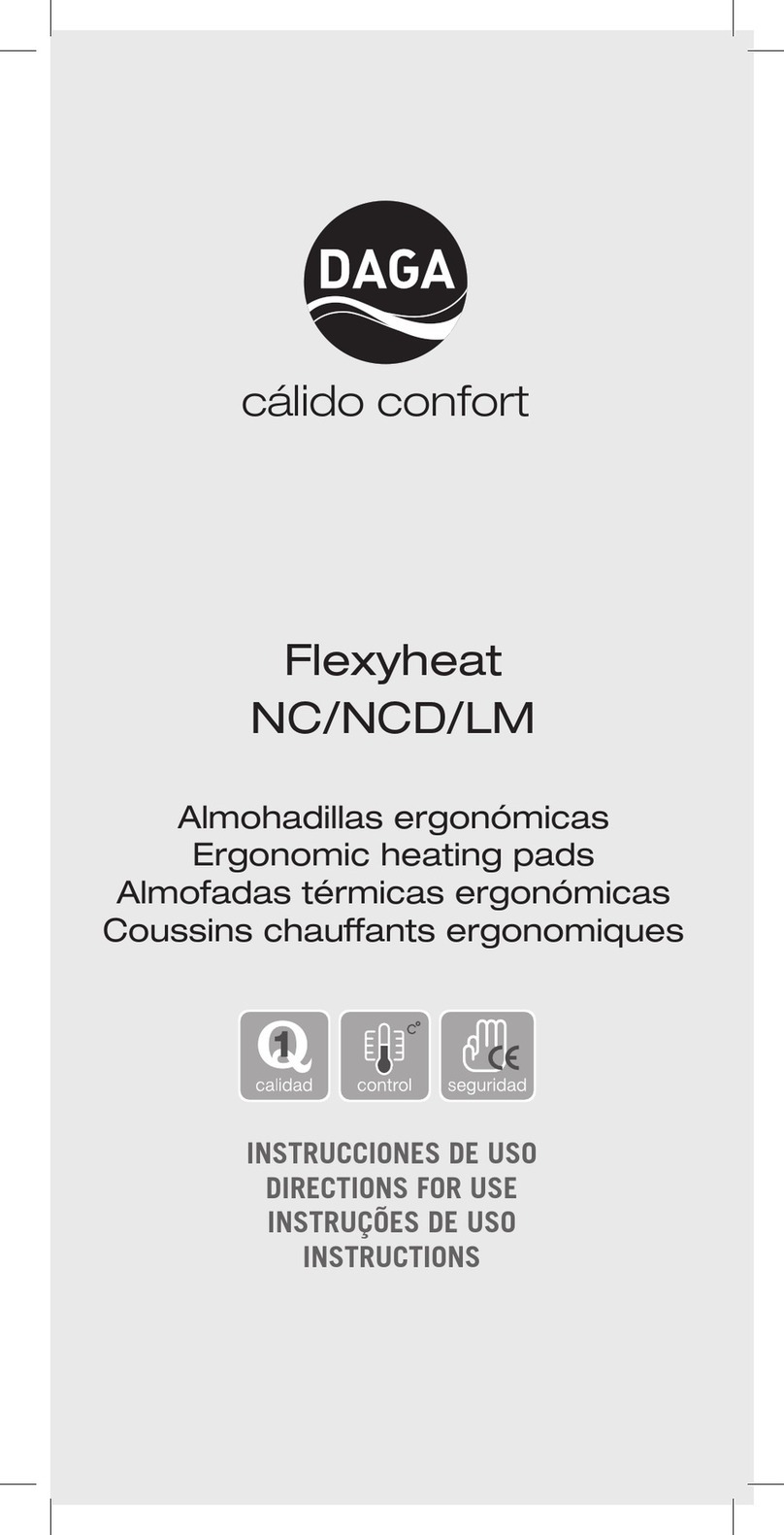Sensor Switch RM-PC-ADC User manual

RM-PC-ADC On/Off Photocell & Automatic Dimming Photocell
Sensor - Recessed Mount, Low Voltage
SERIES # DESCRIPTION
RM-PC-ADC
ON/OFF & AUTOMATIC DIMMING PHOTOCELL SENSOR -
RECESSED MOUNT, LOW VOLTAGE
TYPICAL APPLICATIONS
• Daylight Harvesting
• Combination On/Off Switching &
Continuous Dimming of 0-10 VDC
Dimmable Ballast
FEATURES
• Full On/Off Control of Lighting
• Automatically Dims/Brightens 0-10
VDC ballasts as daylight changes
• Works as Stand Alone Unit or with
Occupancy Sensor System
• Capable of nding optimum set-point
• Digital Set-Point Control
• Programmable via simple
push-button commands
• Outputs to Power Pack or Lighting
Control System via SPDT Relay
• Dimming sinks up to 20 mA
• Green LED Activity Indicator
• 100 Hour Lamp Burn-in Timer Mode
AVAILABLE OPTIONS
• Dual Zone Control (-DZ)
• Low Temp/Hi Humidity (-LT)
SPECIFICATIONS
• Size: 4.40” (11.18 cm) square
• Sensor Weight: 6 Ounces
• Sensor Color: White
• Mounting: Recessed into a 4” x 4”
square junction box
• Relative Humidity: 20 to 90%
non-condensing
• Operating Temp: 14º to 160º F
(-10° to 71° C)
• Storage Temp: -14º to 160º F
(-26° to 71° C)
• 12 to 24 VAC/VDC Oper. Voltage
• UL, CUL, and Title 24 Compliant
• 5 Year Warranty
• Made in U.S.A.
LOW TEMP/HI HUMIDITY(-LT)
• Conformally coated Circuit Board is
corrosion resistant from moisture
• Operates down to -40º F(-40º C)
TEMP/HUMIDITY
Blank = 14º to 160º F
-LT = -40º to 160º F
T128-001-P
w/ Dual Zone Option!
DUAL ZONE (-DZ) OPTION
Daylight contribution diminishes as the distance from the source (windows) increases.
Therefore lights that are different distances from a window should not be controlled
from the same photocell sensor output. With the Dual Zone (-DZ) option, the RM-
PC-ADC has a second set of outputs that can control an additional zone of lighting.
The option works by using a relative set-point for the second zone that is a selected
percentage higher than the primary zone’s set-point. The percentage is chosen via
the digital push-button controls. A second 0-10 VDC dimming ballast can also be
controlled at a selected level higher as well. The -DZ option is ideal for classrooms
with individually controlled parallel rows of lights.
Model Numbering System: RM-PC-ADC-[DUAL ZONE]-[TEMP/HUMIDITY]
Blank = Single Zone
-DZ = Dual Zone
DUAL ZONE
The RM-PC-ADC Series combines the RM-PC On/Off Photocell sensor with the
RM-ADC Automatic Dimming Control sensor to provide the industry’s most
intelligent control of lighting for daylight harvesting applications. Ideal for public
spaces with windows like vestibules, corridors, or bathrooms; the sensors work
by monitoring daylight conditions in a room, then controlling the lighting so as to
insure that adequate lighting levels are maintained. The RM-PC-ADC can be used
alone or as part of an occupancy sensor system The sensors are powered with 12
to 24 VAC/VDC and typically operate with a PP-20 or MP-20 Power Pack; enabling
complete 20 Amp circuits to be controlled.
DAYLIGHT HARVESTING OPERATION
The sensor controls a 0-10 VDC dimmable ballast to achieve maximum daylight
harvesting while maintaining a minimum light level referred to as the “set-point”.
When no daylight is available, the sensor allows the dimmable ballast to operate at
its full bright level (10 VDC). As daylight increases and begins to contribute to the
overall light level of the room, the Automatic Dimming Control (ADC) feature starts
dimming the ballast proportionally. When sufcient daylight is present to maintain
the set-point without any contribution from the lights, the sensor will switch off the
ballast completely. The lights will remain off until the daylight level drops below the
set-point. At this point, the lights will be turned on with the ballast set at its full dim
level. As the daylight levels fall further, the
ADC feature will again take control of the
ballast; reducing the dim level (increasing the
brightness) in order to achieve the necessary
light level. At the point when all daylight
contribution is gone, the ballast will be back
at its full bright level. To make the series of
adjustments unnoticeable to room occupants,
a 10 to 20% safety factor is maintained to
prevent the system from cycling when the
light level is very near the set-point. There
is also a 20 minute delay before the sensor
switches the lights off to prevent the system
from cycling on a cloudy day; and a 45 second
delay before switching from “Off” to “On”.
AMPLE DAYLIGHT
Set-point
Lights Turn ON Lights Turn OFF
DIMMING RANGE
NO DAYLIGHT

SENSOR SWITCH, INC.
900 Northrop Rd., Wallingford, CT 06492
www.sensorswitch.com
WARRANTY: Sensor Switch, Inc. warrants these products to be free of defects in manufacture and workmanship for a period of sixty months.
Sensor Switch, Inc., upon prompt notice of such defect will, at its option, provide a Returned Material Authorization number repair or replace returned product.
LimiTATioNsANd ExcLusioNs: ThisWarrantyis infull lieuofall otherrepresentationand expressedandimplied warranties(includingthe impliedwarrantiesof
merchantability and tness for use) and under no circumstances shall Sensor Switch, Inc. be liable for any incidental or consequential property damages or losses.
Revised 03/01/2007
copyright Sensor Switch, Inc. 2007
RM-PC-ADC
WIRING TOGETHER WITH OCCUPANCY
SENSORS
Wire upstream occupancy sensor White wire
to sensor Brown wire. When the space is
unoccupied, the lights stay off regardless of
daylight levels. However when occupied, the
photocell sensor will control the lights according
to daylight level and set-point.
WHT
BLU
BLU
BLK/ORN
N N
PP-20
BLK
RED
WHT BLK
RED
WHT
BRN
RED
BLK
WHT
GRY
OCCUPANCY
SENSOR
RM-PC-ADC
VIO/WHT striped
BLU
Cap and Tape Off Blue Wire
VIO
SWITCH
H
BLK - 120 V
ORN - 277 V
BALLAST
STANDARD RM-PC-ADC
WHITE - Outputs high VAC/VDC (from
Brown wire) when sensor calls for Lights
“On” (eg. the room is Dark)
BLUE - Outputs high VAC/VDC (from Brown
wire) when sensor calls for Lights “Off” (eg.
adequate daylight is present)
RED - 12 to 24 VAC/VDC
BLACK - Common
BRN - Connect to Low Voltage Control input
(Red wire on a Power Pack, White wire on
an occupancy sensor)
VIOLET/WHITE striped - Connect to Violet
wire from Zone 1’s 0-10 VDC dimmable bal-
last. Also connect ballast Gray wire to sen-
sor Black wire.
WIRING INSTRUCTIONS
Wire lead connections are Class II, 18 to 22 AWG.
DUAL ZONE OPTION (-DZ)
BLUE wire will output high DC when sensor calls for Lights “On” for
Zone 2.
SOLID VIOLET wire connects to Zone 2’s 0-10 VDC dimmable bal-
last. Also connect Zone 2’s ballast Gray wire to sensor Black wire.
(Note: With the -DZ option the SPDT Relay is no longer present and
the White wire will output only DC)
LIGHT LEVEL SET-POINT
The sensor functions by comparing the amount of daylight available with a dened acceptable lighting level. This threshold,
called the “set-point”, is utilized in all daylight harvesting lighting control decisions. The sensor can nd its optimum set-
point via the Automatic Set-Point Programming mode. In this mode, the sensor takes light readings at different
dim settings and then sets the minimum light level to be the amount contributed by the articial lights being controlled. It
is assumed that the space is properly lit by design, however, if this is not the case the set-point may be easily adjusted to
the occupant’s preference. All modes and settings are entered digitally via a push button sequence. Once programmed,
the exact value of the set-point (in foot candles) can be read out from the sensor via a series of LED ashes.
DIGITAL SET-POINT CONTROL
Each sensor contains a microcontroller that enables the user to engage the Automatic Set-Point Programming mode or
to manually set / adjust the set-point. The manual process involves calculating and inputting the exact foot-candle value
of the desired set-point into the sensor. It is important to note that the set-point is the light level required at the face of
the sensor and that this value will be much different than the level required at a work surface. Typically, light levels at the
ceiling are 3 to 5 times less than the work surface. For example, if 50 fc is desired at the work surface, the sensor should
be set at 10 fc. For best results, measure the levels at both locations using a foot-candle meter before programming the
set-point.To easily adjust the set-point after it has been initially programmed (via either the Automatic or Manual process)
the CM-ADC has an Incremental control feature that steps the brightness setting (voltage) up or down 10% (1 VDC) and
adjusts the set-point accordingly.
WHT
BLU
BLU
BLK/ORN
N N
PP-20
BLK
RED
WHT
BRN
RED
BLK
WHT
GRY
RM-PC-ADC
VIO/WHT striped
VIO
SWITCH
H
BLK - 120 V
ORN - 277 V
BALLAST
VIO [-DZ] Dual Zone
BLU
Cap and Tape Off Blue Wire
Table of contents
Other Sensor Switch Accessories manuals
